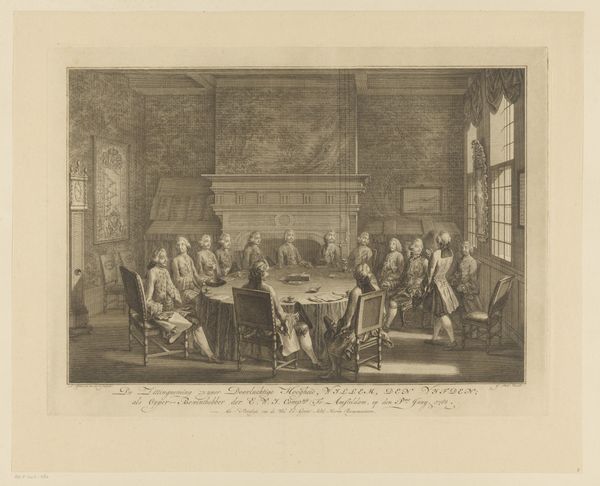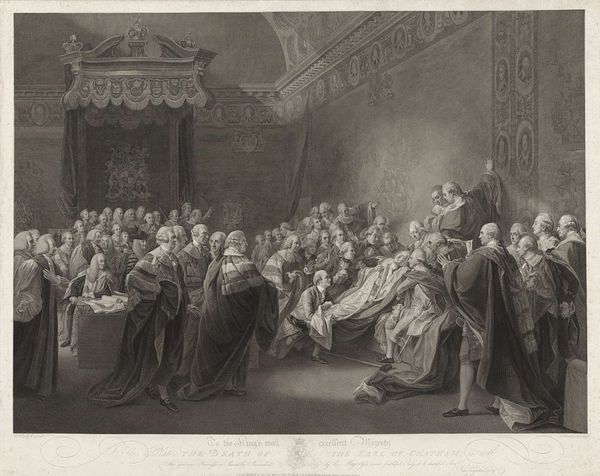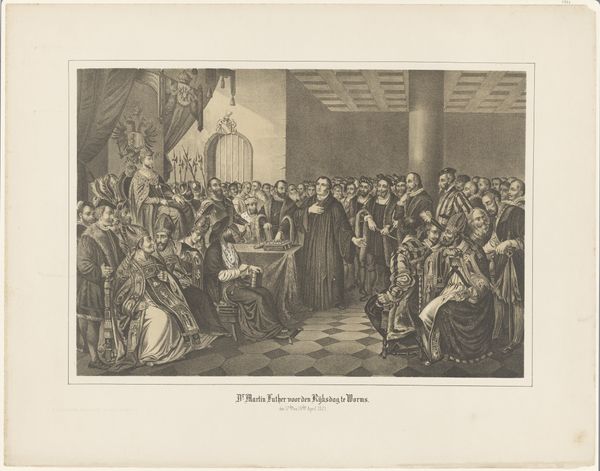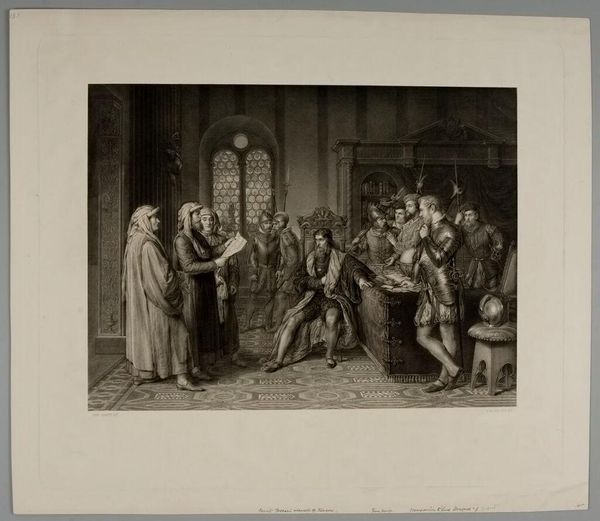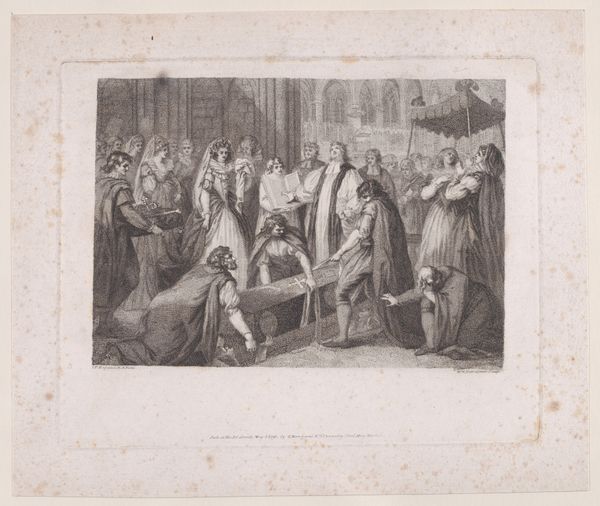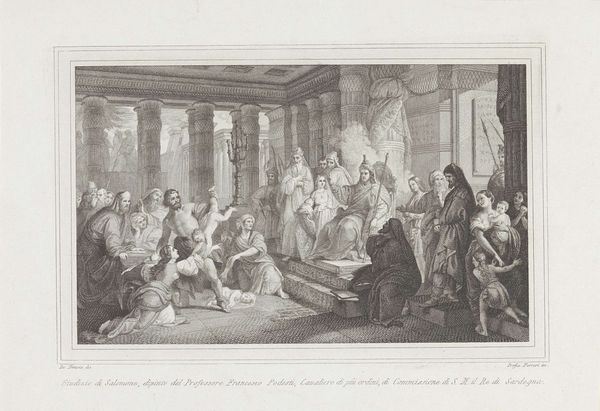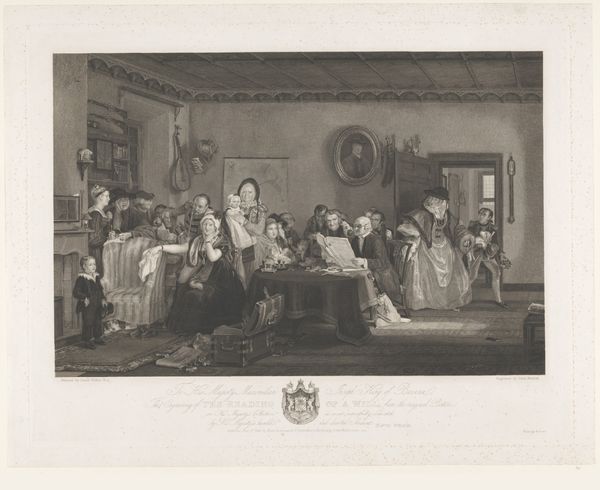
Familieportret van Johan Willem Friso, prins van Oranje-Nassau, Maria Louisa van Hessen-Kassel, Willem IV, prins van Oranje-Nassau, en Amalie, gravin van Nassau-Dietz 19th century
0:00
0:00
Dimensions: height 178 mm, width 238 mm
Copyright: Rijks Museum: Open Domain
Editor: This engraving, "Family Portrait of Johan Willem Friso, Prince of Orange-Nassau, Maria Louisa of Hesse-Kassel, Willem IV, Prince of Orange-Nassau, and Amalia, Countess of Nassau-Dietz," is an impressive group portrait. I'm immediately struck by the sheer number of figures and the attempt to portray dynastic power. How do you interpret this work? Curator: I see a deliberate construction of power and legacy, using a visual language deeply rooted in tradition. Consider the architectural setting, almost like a stage. The family is not just a group of individuals, but a carefully arranged set of symbols representing lineage, authority, and continuity. How do the poses and clothing contribute to this impression? Editor: The elaborate wigs and formal attire certainly emphasize their status, but also create a sense of distance, like they're not quite 'real' people. Almost like actors on that stage you mentioned. Curator: Precisely! It's a carefully orchestrated performance of royalty. Notice how the children are positioned, almost as miniature versions of their parents, reinforcing the idea of inherited power. Does that resonate with contemporary perceptions of royal families and the concept of dynasty? Editor: Absolutely, that emphasis on lineage is still relevant today, although the symbolism has shifted. It makes you wonder, what aspects of the Royal image is persistent? Curator: Indeed. The symbolic language continues to evolve, yet the core idea of family and succession as emblems of national identity, persists. That visual shorthand of power has changed, and that gives me a new outlook. Editor: I agree; I hadn't fully appreciated the depth of the visual encoding at play in establishing dynastic image.
Comments
No comments
Be the first to comment and join the conversation on the ultimate creative platform.




